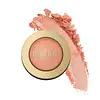What's inside
What's inside
 Key Ingredients
Key Ingredients

 Benefits
Benefits

No benefits
 Concerns
Concerns

 Ingredients Side-by-side
Ingredients Side-by-side

Synthetic Fluorphlogopite
Mica
Cosmetic ColorantSilica
AbrasiveC30-45 Alkyl Dimethicone
Skin ConditioningButyrospermum Parkii Butter
Skin ConditioningSqualane
EmollientSorbitan Isostearate
EmulsifyingC20-24 Alkyl Dimethicone
Skin ConditioningArnica Montana Flower Extract
MaskingPseudozyma Epicola/Sunflower Seed Oil Ferment Extract Filtrate
Emulsion StabilisingTocopherol
AntioxidantAscorbyl Palmitate
AntioxidantTocopheryl Acetate
AntioxidantRubus Idaeus Leaf Extract
Skin ConditioningGlycerin
HumectantCaprylic/Capric Triglyceride
MaskingCaprylyl Glycol
EmollientEthylhexylglycerin
Skin ConditioningPentaerythrityl Tetra-Di-T-Butyl Hydroxyhydrocinnamate
AntioxidantC20-24 Olefin
Skin ConditioningZinc Stearate
Cosmetic ColorantTriethoxycaprylylsilane
Aluminum Hydroxide
EmollientAlumina
AbrasiveCI 77492
Cosmetic ColorantCI 15850
Cosmetic ColorantCI 77891
Cosmetic ColorantCI 19140
Cosmetic ColorantSynthetic Fluorphlogopite, Mica, Silica, C30-45 Alkyl Dimethicone, Butyrospermum Parkii Butter, Squalane, Sorbitan Isostearate, C20-24 Alkyl Dimethicone, Arnica Montana Flower Extract, Pseudozyma Epicola/Sunflower Seed Oil Ferment Extract Filtrate, Tocopherol, Ascorbyl Palmitate, Tocopheryl Acetate, Rubus Idaeus Leaf Extract, Glycerin, Caprylic/Capric Triglyceride, Caprylyl Glycol, Ethylhexylglycerin, Pentaerythrityl Tetra-Di-T-Butyl Hydroxyhydrocinnamate, C20-24 Olefin, Zinc Stearate, Triethoxycaprylylsilane, Aluminum Hydroxide, Alumina, CI 77492, CI 15850, CI 77891, CI 19140
Talc
AbrasiveMica
Cosmetic ColorantGlyceryl Ethylhexanoate/Stearate/Adipate
EmollientDimethicone
EmollientOctyldodecyl Stearoyl Stearate
EmollientIsopropyl Myristate
EmollientPolyacrylamide
C13-14 Isoparaffin
EmollientLaureth-7
EmulsifyingSorbitan Stearate
EmulsifyingZea Mays Starch
AbsorbentLauroyl Lysine
Skin ConditioningMagnesium Aluminum Silicate
AbsorbentCetearyl Ethylhexanoate
EmollientSodium Dehydroacetate
PreservativeNylon-12
Imidazolidinyl Urea
PreservativeMethylparaben
PreservativeSilica
AbrasiveEthylparaben
PreservativePropylparaben
PreservativeButylparaben
MaskingCI 77891
Cosmetic ColorantCI 77491
Cosmetic ColorantIron Oxides
CI 19140
Cosmetic ColorantCI 15850
Cosmetic ColorantCI 15985
Cosmetic ColorantCI 75470
Cosmetic ColorantCI 77007
Cosmetic ColorantTalc, Mica, Glyceryl Ethylhexanoate/Stearate/Adipate, Dimethicone, Octyldodecyl Stearoyl Stearate, Isopropyl Myristate, Polyacrylamide, C13-14 Isoparaffin, Laureth-7, Sorbitan Stearate, Zea Mays Starch, Lauroyl Lysine, Magnesium Aluminum Silicate, Cetearyl Ethylhexanoate, Sodium Dehydroacetate, Nylon-12, Imidazolidinyl Urea, Methylparaben, Silica, Ethylparaben, Propylparaben, Butylparaben, CI 77891, CI 77491, Iron Oxides, CI 19140, CI 15850, CI 15985, CI 75470, CI 77007
Ingredients Explained
These ingredients are found in both products.
Ingredients higher up in an ingredient list are typically present in a larger amount.
Ci 15850 is the pigment color red. It is an azo dye and created synthetically.
Azo dyes need to be thoroughly purified before use. This allows them to be more stable and longer-lasting.
This ingredient is common in foundations, lipsticks, and blushes. This color is described as brown/orangey red.
It has many secondary names such as Red 6 and Red 7. According to a manufacturer, Red 6 usually contains aluminum.
Learn more about CI 15850CI 19140 is also known as Tartrazine. Tartrazine is a synthetic dye used in cosmetics, foods, and medicine to add a yellow color.
Tartrazine is created from petroleum and is water-soluble.
Some people may experience allergies from this dye, especially asthmatics and those with an aspirin intolerance.
Learn more about CI 19140Ci 77891 is a white pigment from Titanium dioxide. It is naturally found in minerals such as rutile and ilmenite.
It's main function is to add a white color to cosmetics. It can also be mixed with other colors to create different shades.
Ci 77891 is commonly found in sunscreens due to its ability to block UV rays.
Learn more about CI 77891Mica is a naturally occurring mineral used to add shimmer and color in cosmetics. It can also help improve the texture of a product or give it an opaque, white/silver color.
Serecite is the name for very fine but ragged grains of mica.
This ingredient is often coated with metal oxides like titanium dioxide. Trace amounts of heavy metals may be found in mica, but these metals are not harmful in our personal products.
Mica has been used since prehistoric times throughout the world. Ancient Egyptian, Indian, Greek, Roman, Aztec, and Chinese civilizations have used mica.
Learn more about MicaSilica, also known as silicon dioxide, is a naturally occurring mineral. It is used as a fine, spherical, and porous powder in cosmetics.
Though it has exfoliant properties, the function of silica varies depending on the product.
The unique structure of silica enhances the spreadability and adds smoothness, making it a great texture enhancer.
It is also used as an active carrier, emulsifier, and mattifier due to its ability to absorb excess oil.
In some products, tiny microneedles called spicules are made from silica or hydrolyzed sponge. When you rub them in, they lightly polish away dead skin layers and enhance the penetration of active ingredients.
Learn more about Silica